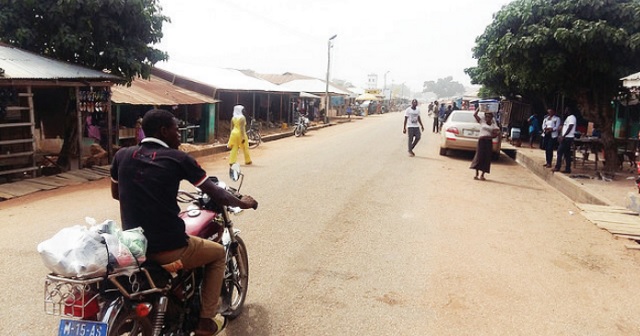
Migrants are held captive, fed just enough to keep them alive, and subjected to various forms of inhuman treatment in a bid to extort money
Kampala, Uganda | KWAKU BOTWE | Thirty-year-old Nazir Mohammed sits on one of the two sofas in his single room in Kwame Danso, a small town about 290 kilometres north of Ghana’s capital Accra, reflecting on life back in Libya.
“Libya offers great economic opportunities to West African migrants, but the human rights abuse, especially of dark-skinned Africans, is real. I will not advise even my enemy to go to Libya,” Mohammed says.
He is among some 19,000 Ghanaians who were repatriated from Libya about seven years ago. Mohammed left home at 23 after completing high school. Having lost his father a few months before, he felt the responsibility of taking care of his mother and four other siblings naturally fell on him as an older male child.
“I just heard that if I get about 500 cedis (about 100 dollars) I would be able to get to Libya. And that meant a lot of hard work. So I did some construction work to gather that money,” he said. “My mom and family only got to know of my intentions when I called and told her. I was already halfway on my journey. She cried but later prayed for me since there was nothing she could do.”
Most young people set off on the trip without telling family members, anticipating they wouldn’t be supportive because of the risks.
Ghana, Senegal, Nigeria, Niger and Cote d’Ivoire all have a large number of their citizens among the almost one million migrants trapped in Libya. Mohammed’s home region, Brong Ahafo – which is in the middle belt of Ghana – has the highest number of people migrating to Libya. Most, like Mohammed, hope to use Libya as a transit point to Europe.
The Back Story
The history of Ghana–Libya migration dates back to the 1980s when the Ghanaian government signed a bilateral agreement with its Libyan counterpart to send some 200 Ghanaian teachers to teach English in Libya, according to researchers at the Centre for Migration Studies at the University of Ghana, Leander Kandilige and Geraldine Adiku.
This arrangement was also necessitated by the mass expulsion of illegal immigrants, mostly from West African countries, including about two million Ghanaians, from Nigeria in 1983. In the initial stages, the Libyan authorities offered employment to only highly skilled Ghanaian immigrants.
But the availability of job opportunities for other low-skilled migrants attracted many more Ghanaians who entered Libya through informal routes such as the Sahara Desert. As a result, the Libyan authorities clamped down on illegal migration amidst forced repatriations.
Before the 2011 Libyan political crisis, the Libyan authorities were already dealing with illegal immigrants and concomitant attacks, especially on black migrants. In 2006, the International Organisation for Migration (IOM) set up a voluntary return program to arrange for the return of stranded undocumented migrants from Libya to their countries of origin.
Statistics at the Ministry of Foreign Affairs and Regional Integration indicate that on Oct. 8, 2000, the first group of 238 Ghanaians fleeing attacks arrived in Ghana, with harrowing tales of gross human rights abuses. The influx has continued. Last year, 565 people returned with similar stories.
But the biggest evacuation of migrants happened in 2011 in the heat of the Libyan crisis, when IOM figures show that about 19,000 Ghanaians were evacuated back to Ghana. Many migrants attributed this exodus to increased hostility against black Africans. The political instability and challenge to the authority of Muammar Gadhafi offered a prime opportunity for some Libyan nationals – who saw the Libyan leader as a shield for black Africans and accused Gadhafi of using them as mercenaries – to attack dark-skinned people.
“It was very dangerous to be spotted as a black African,” said Mohammed. He said a lot of migrants left properties behind and several months of salary arrears from companies they worked for. Nazil says it is common practice for companies to pay migrant workers about two months’ salary after they have worked for six months. This means migrant workers always have their unpaid monies with the companies.
“I was lucky because I got help from a soldier friend whom I used to teach English to. He drove me and my friend all the way from Benghazi to neighboring Egypt where evacuation planes were. When I got to Ghana I had only 500 cedis left on me, but I had left about 7,000 cedis worth of money with my company, and that was very painful,” added Nazir Mohammed with bitterness.
 The Independent Uganda: You get the Truth we Pay the Price
The Independent Uganda: You get the Truth we Pay the Price





